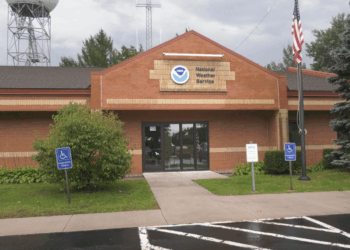Labor Day weekend is here, marking the end of summer and the beginning of meteorological fall.
This summer was “front-end loaded.” By that, I mean the warmest days were early in the season. There was a 10-day stretch with highs of 80° or above from May 26 through June 4. The warmest week was the seven-day stretch from June 18-24 with a mean temperature of 71.9°.
Highs hit 90° or above on three days, with one of them occurring outside of meteorological summer on May 31. Similarly, the temperature can crack the 90° mark during the early days of autumn. In fact, last year, the high hit 90° on September 2.
The most outstanding September heat wave in recent times occurred 21 years ago. High temperatures soared above 90° for three consecutive days from September 7-9, 2002.
The summer of 2023 may be “back-end loaded,” too, if NOAA’s extended outlook verifies. It predicts a huge swath of above-average temperatures in the early days of September over the central U.S. including Upper Michigan.
For reference, the average high and low of September 1 is 72°/51° at the National Weather Service site near Negaunee. By the end of the month, the average high and low slips to 60°/41°.
NOAA’s Climate Forecast model calls for temperatures to end up above average for the month as a whole. The precipitation forecast is for below-normal rainfall. And yes, there can even be snowfall in September, but it’s unusual. The last measurable snow at the NWS was 30 years ago when 1.7″ fell on September 29, 1993.


















